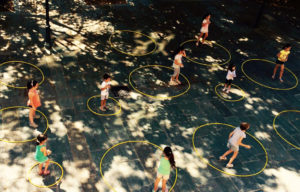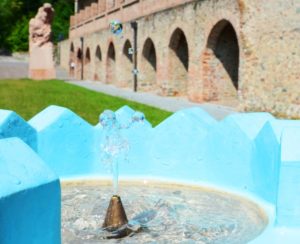How will you travel?
A journey that doesn’t provide the experience of transition and the wonder of discovery cannot be defined as such, even when there’s no actual relocation to a different geographical area, but rather the crossing of a symbolic context like a museum. A space/time characterised by special elements, which in our case are represented by contemporary works of art, tangible expressions of the multiple points of view, glances, desires and visions of the artists of our time. And, in line with the context, inside and outside the museum, we call ourselves artenauts (art travellers).
In fact, our main role has always been to welcome people of every age to assist them in approaching the art of the present time, and share meaningful experiences. Which, up until the pandemic outbreak, used to happen not only in the physical space of the museums, but also in other contexts like squares, schools, gardens; and from 2005 with the big Third Paradise Operation by Michelangelo Pistoletto / Cittadellarte and from 2012 in collaboration with the network of ambassadors linked to the Rebirth-day.

We are artenauts because, while we draw fully on the metaphor of the journey as an iconic and symbolic representation of the path of knowledge, we deal on a daily basis with the other, the new, the unknown and the mystery that every work carries with itself. These themes have characterised the creative and literary dimensions in all times, placing themselves between reality and fantasy, between truth, wonder and phantasmagoria. In other words, the ideal context to acquire new cultural forms useful to accepting the different and the unusual. When associated to contemporary artistic expressions, the theme of the journey – always topical, multiform and polyhedric – opens up to endless possible connections occurring through the transience of the present time, which – like life – needs to be travelled, following the continuous changes and the discovery of the new and the unknown, which can only happen going forward, step by step. Time and space too, endowed with sense through an incessant movement, open up to a ‘strange’ and multiform glance allowing us to re-read the past and imagine the future, in an always concrete and original way. A theme that, throughout the centuries, has offered inputs and plots of immense potential for its suitability to combine narration and description, spatiality and diachrony, and for the endless metaphors ranging from the destiny of peoples to the adventure of the individual pilgrim.

For us, everything is conveyed by passion and driven by words, gestures, sharing and the ability to recreate the context of the work, through experience and experimentation, in order to spark in the interlocutor the desire to understand and therefore to actively participate in the journey of knowledge.
Technological innovations have shrunk the world, the pandemic has affected our society to the point of drastically limiting our individual freedom. We, instead, want to keep believing that live experience is irreplaceable. When narrations will resume their conventional transit, we’ll be once again able to show how our journey is related to the time of life and to learning. All movements – even in the sense of the ability to welcome the new – will therefore be carried out along extraordinary paths that will, as always, travel from the past to the present towards the future.
Anna Pironti & Paola Zanini, artenauts
Educational Department of Castello di Rivoli Contemporary Art Museum

